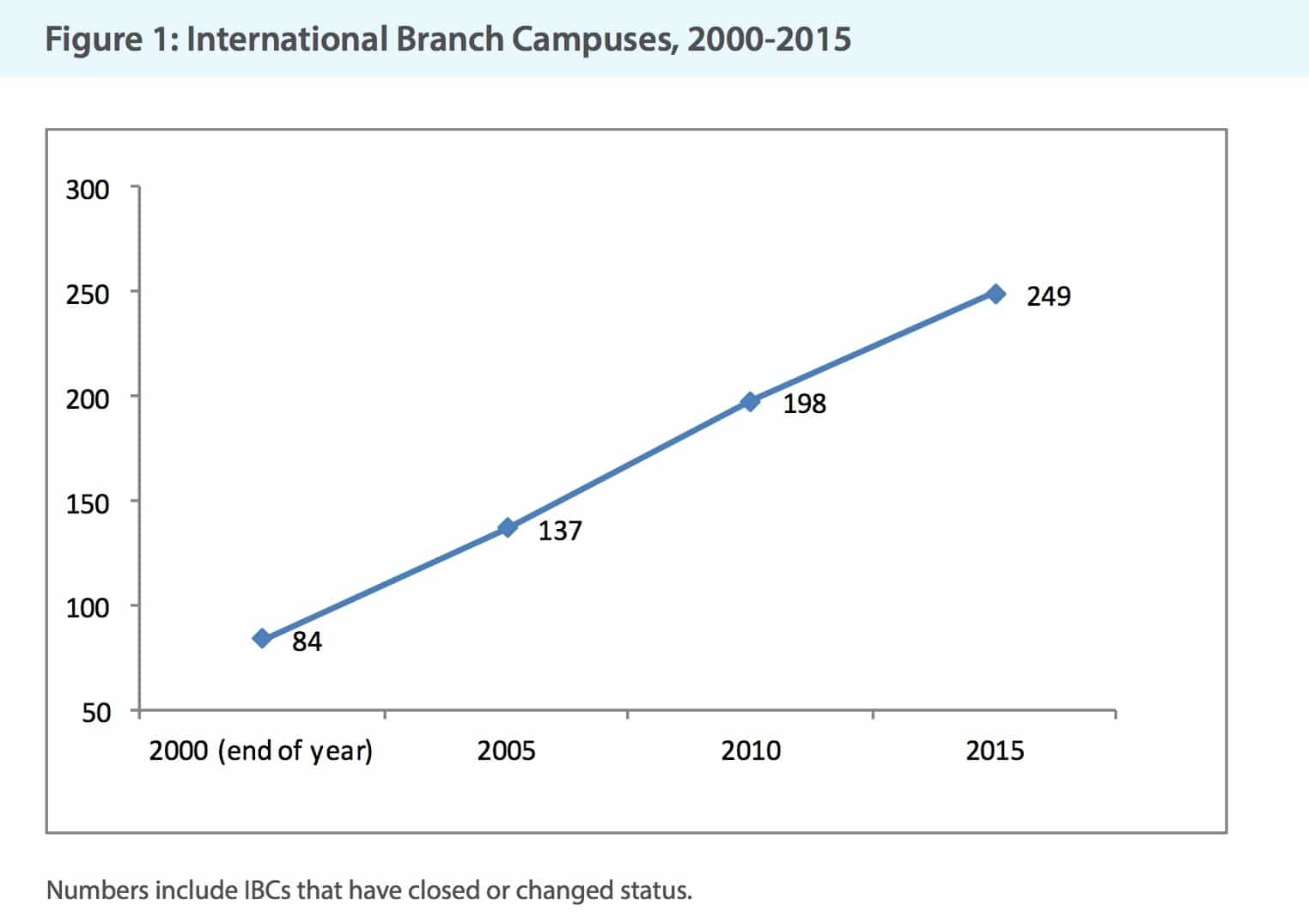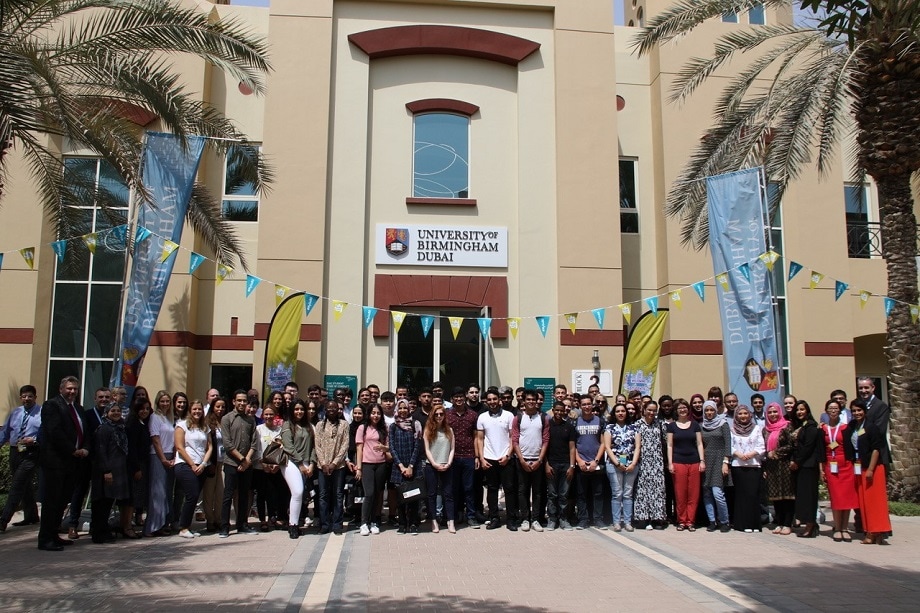Overseas campuses have been in the news again. Garnering most of the headlines is University College London with the announcement that it will close its Qatar campus in 2020.
As THE reported:
UCL has become the latest university to announce the closure of an international branch campus amid concerns over the future of the overseas outpost model.
A spokeswoman at UCL said that the university’s Qatar campus would close in October 2020 on completion of its contract with the Qatar Foundation. She added that the decision was taken jointly by UCL and the Qatar Foundation.
The university closed its Australia campus in 2017 and ceased teaching in Kazakhstan in 2015.
This is really just the latest step in the implementation of a change in strategy for UCL. Having closed its other small outposts (very small in the case of Australia), it is simply completing the change by pulling out of Qatar. The operation there was rather niche, and back in 2016 was reported in the OBHE study LINK to have only five courses on offer and just 140 students enrolled.
The same THE story reports on financial challenges in relation to both the University of Central Lancashire’s Cyprus campus and the Xi’an Jiaotong-Liverpool University campus but both institutions seem to have a much longer-term view of their commitments which outweigh early losses.
Meanwhile, the Times recently carried a story about university debt levels and linked this in several cases to universities’ international campus operations:
- Reading University
Invested £21 million in its Malaysia campus. It predicts that this could rise to almost £70 million by 2021.
Debt in 2016-17 £141 million - Glasgow Caledonian University
Income from its New York campus is “disappointing”. Has increased the loan facility to about £15 million.
Debt in 2016-17 £8 million - Aberdeen University
Has “unfortunately not been able to go ahead” with its plans for a campus in South Korea.
Debt in 2016-17 £40 million - Warwick University
California campus plan shelved.
Debt in 2016-17 £119 million - Aberystwyth University
In 2017 it confirmed it would close its Mauritius campus.
Debt in 2016-17 unobtainable - Wolverhampton University
Mauritius campus closed.
Debt in 2016-17 £213,000
Aberdeen’s plans for a South Korea campus were thwarted by oil prices according to this story and Warwick’s California dreams ended following reconsideration about the nature of the endeavour, “noting concerns about the evolving financial framework that would need to be in place to support a research-led comprehensive campus and some of the regulatory issues that would apply to a non US-based institution wishing to establish itself in California and other global political challenges”.
Going for growth
But it’s not all one-way overseas campus traffic. There are many challenges but there is still growth. As previously noted here the 2016 OBHE survey indicated continuing net growth in the number of branch campuses being established.

Although more recent data is not available, there are quite a few new developments to make up for the shutdowns noted above.
Malaysia has long been a destination for international branch campuses, but they have all been from the English-speaking world until recently when China’s Xiamen University opened a campus there as this article notes:
With typical Chinese speed, the fourth and newest campus of Xiamen University (XMU), about 45 km outside of Kuala Lumpur, Malaysia, has completed its first phase of development. This project was initially drafted in 2012, began in 2014, and started its second phase in November 2017. Among the ten international branch campus universities in Malaysia, Xiamen University Malaysia (XMUM) occupies the largest campus with a total gross floor area of 470,000 square meters, represents the largest overall investment (about RMB 1.5 billion, mostly by Xiamen University—which corresponds to over US$37million), and is 100 percent owned by XMU. The branch campus celebrated its opening ceremony on February 22, 2016, and currently operates 15 programs, enrolling about 1,720 Malaysian, 950 Chinese, and 30 other international students. It is expected that in five years’ time the total number of students will be 5,000.
University World News has reported that Malaysia is also looking to recruit a Japanese university to establish a branch campus:
The University of Tsukuba could be the first Japanese university to set up a branch in Malaysia, and the first Japanese campus anywhere overseas, after talks kicked off at the end of 2018 following a request from Malaysia’s Prime Minister Mahathir Mohamad and supported by Japan’s Prime Minister Shinzo Abe.
The University of Tsukuba, a state institution, is responding to a request from Mahathir, a popular Asian leader in Japan for his 1980’s ‘Look East’ policy that promoted Malaysian efforts to follow Japan’s economic miracle.
Mahathir is seeking to revive his Look East policy and raised the possibility of a Japanese branch campus in Malaysia during an official visit to Tokyo in November when he was conferred an honorary doctorate by the University of Tsukuba. Mahathir also visited Tokyo University during that trip.
The Malaysian leader believes Japanese institutions could promote the kind of Japanese work values in Malaysia that led to Japan’s own dramatic post-Second World War recovery. He is specifically advocating for high-tech exchanges with Japan.
The University of Birmingham has now opened its campus in Dubai where it intends to offer a wide range of undergraduate including business, economics, accounting and finance, computer science and mechanical engineering. At postgraduate level it will offer international business, computer science, international commercial law and teaching with primary and secondary education pathways in science, English and mathematics and inclusion and special educational needs.

Although Aberdeen decided not to proceed in South Korea it does still have an outpost, albeit a fairly modest one, in Qatar, where it offers two undergraduate courses, business management and accountancy and finance and two postgraduate degrees, an MBA and an MSc international business management in partnership with AFG college. Over the next four years the campus is expected to expand to include additional programmes, including STEM.
This is the campus dining area.

Security studies
But perhaps the most surprising new offshore campus development is this one in Syria where Turkey’s Gaziantep University has opened a branch campus in Jarabulus. It’s a hugely political step of course and one supported by the Turkish government and presumably aimed a cementing control in this area of Syria:
Gaziantep University was asked to open the campus as it was close to the region, already had a lot of experience in teaching Syrian refugees on its central campus in Turkey in Turkish, English and Arabic programmes, had hired Syrian academics and had provided Syrian refugees with public services in Turkey. The university had even started to publish a journal and newspaper in Arabic.
The Turkish authorities decided to build in Jarabulus, a city under the protection of the Turkish army. As the building selected had suffered damage during the war, Gaziantep University renovated it and made it ready for education purposes over the summer. It was announced that the campus would accept Syrian students who have a high school diploma in autumn 2018.
As the number of applicants was higher than expected, the university asked applicants to sit an entrance test in four locations in Northern Syria. The candidates were then informed about their test scores and asked to choose a programme. One hundred and forty five candidates with the highest test scores were placed in a programme being run on the campus. Gaziantep University’s branch campus in Jarabulus offers associate degrees in five programmes: first and emergency aid, patient care, office management, divinity and private security.
It’s certainly a notable development and that course portfolio is equally eye-catching.
La la land
Far from war-torn Syria there are also claims that Los Angeles is the next big location for university outposts. As this story from the Chronicle notes, New York University is the latest institution to move in, albeit with a modest 40-student film and TV programme. There are many strong arguments for the move:
Establishing a physical presence in an industry town can signal to employers, prospective students, and, perhaps, would-be donors that a university is a serious player in that field. Programs in Washington, DC, for example, integrate students into Capitol Hill and think tanks over a summer or a semester.
“Being a part of the Hollywood industry, being part of those networks — it’s one thing to go and make visits, it’s another thing to be a physical entity located there, essentially an embassy,” said Jason E. Lane, interim dean of the University at Albany’s School of Education, who has studied the expansion of universities beyond state borders.
Driving NYU’s decision was a sense, in part, that internship experience can better position students in entertainment for career success, officials said. But Linda G. Mills, vice chancellor and senior vice provost for global programs and university life, recognized that NYU competes with the University of Southern California and the University of California at Los Angeles for students interested in film and the arts — and that this type of program could give the East Coast university an edge.
Lane said that beyond connections in industry, there are strategic reasons why an East Coast university would want a West Coast presence. Population growth in that geographic region is attractive to universities wanting for applicants, though NYU’s pool of prospective students has grown for the last 11 years. Proximity to China, a primary enrollment driver for research universities, and the technology companies of San Francisco can also appeal, he said.
But, as the piece notes, this is already something of a crowded marketplace:
NYU’s outpost enters a crowded market for outside campuses in the City of Angels. Arizona State University plans to house journalism and design programs in a renovated former newspaper building in downtown Los Angeles starting in 2020.
Quinnipiac University started its Los Angeles programs in 2014, and that same year, Emerson College opened a building in the city after using rented space for more than two decades. Syracuse University opened a satellite campus in Los Angeles in 2011.
Not about the money
It is a mixed picture overall. But it is clear that the opening of branch campuses remains upward as per the 2016 OBHE report. There will be ups and downs and churn in the market as volatile political circumstances and finances around world and in UK continue to have a real impact on such developments.
But it really isn’t all about the money. As I’ve previously noted here there is still a common view that a branch campus is or should be a cash cow but this is very far from the reality. The essence of the branch campus approach has to embody a spirit of engagement, genuine partnership and adopt a long-term view and not be focused on extracting money.
While it is inevitable that there will be a need to repatriate some funds to cover part of the costs of operations, it would fundamentally undermine confidence in the enterprise and credibility if it appeared that the aim was to extract money. This would simply not be sustainable in the long run.
A genuinely internationalised university brings huge benefits for its home country as well as those in which it operates. It is essential to be clear about motivations and objectives as establishing an overseas campus is very far from straightforward. Challenges range from building the infrastructure to restructuring institutional and local governance. Legal issues, financial arrangements and developing local management can take time and significant effort, as can coming to terms with an entirely new academic, political and cultural framework. It also necessitates close relationships based on trust and taking a long-term view with partners.
To leverage the full benefit of an international campus though, a university must have a strategy that goes well beyond thinking about cash-generation. A quick in and out should not be something any institution contemplates in terms of branch campus activity.














great article
Nice article…..